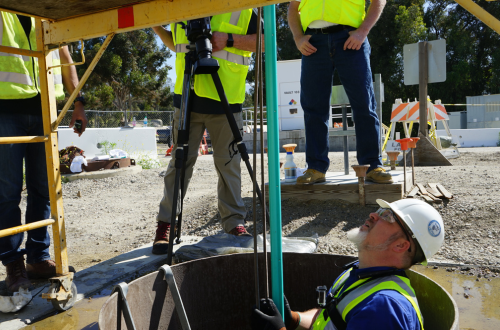Article | January 31, 2023
Download as a PDF document
It can be easy for many water utilities to look at the technologies they are using and presume that things are going well enough. When it comes to upgrades and technological advancements, many water system managers take an “if it ain’t broke, don’t fix it” approach. Actually, it may be more accurate to say that it’s a “wait until it’s broken to fix it” approach.

Waiting until technology fails is an invitation for disaster. However, water utilities work on tight margins, and there is rarely surplus funding available to upgrade for the sake of upgrading. This is particularly true for meters. The more endpoints or other measurement locations, the more costly it is to upgrade. In addition, replacing meters can be a time-consuming, labor-intensive process.
Yet as climate change-induced issues of water scarcity become more common throughout the U.S., utilities are under more and more pressure to ensure that every drop of water treated and pumped is accounted for (and billed for) – a challenge that can be addressed by upgrading to the most advanced metering technology available.
So, what is a water utility to do? How can they address the needs of climate change today while future-proofing the system to make upgrades easier and more cost effective?
Let The Funding Flow
The Bipartisan Infrastructure Law (BIL) signed in 2021 has made more than $50 billion available for water-related projects. Many water utilities have yet to apply for grants or other funding under the BIL, presuming it to be largely for lead pipe replacement and similar projects. However, a large portion has been earmarked specifically for projects that enhance climate resiliency. This can include efforts to find new and/or more sustainable water sources. But many fail to realize that updating meters and adding other types of instrumentation with the aim of reducing leaks and mitigating non-revenue water (NRW) are very much eligible for such funding. The same is true of expenditures to install or upgrade an advanced metering infrastructure (AMI), which can provide data that, when paired with analytics and machine learning software, can make it easier to pinpoint and even predict leaks.
It's also critical for water utilities to understand that not every BIL project has to be a massive, multi-million-dollar undertaking. Many projects being funded under BIL are small upgrades, often between $300,000 and $1 million. This means utilities can upgrade just the oldest and most critical units, or tackle upgrades slowly over the course of several years, rather than all at once.
Invest In Upgradable Meters
No meter lasts forever. That’s the unfortunate reality of all technology. In fact, modern society has built an expectation that electronics are made to be thrown away as soon as something better comes along.
But many meters work the exact opposite way. In fact, it is possible to invest in meters that can be upgraded without major construction or pipework. For example, McCrometer’s full-bore electromagnetic meters (mag meters) are designed so that, as firmware and other components advance, water utilities can download updates that can enhance accuracy without replacing the bore.
Another technology with similar benefits is the full-profile insertion (FPI) mag meter. Unlike full-bore mag meters, the FPI meter is hot-tapped into place. The hot tap installation is a much faster process than the typical cutting and welding associated with full-bore meters. At the same time, the hot tap creates a permanent installation point. What that means is, when the FPI meter reaches the end of its life expectancy (which is about the same as a full-bore meter), it can be easily removed and a new meter slid into its place within minutes.
Both of these features can help future-proof a water utility by ensuring that upgrades to meters can be made more easily and affordably, long after the BIL funding runs out.
Choosing The Right Metering Points
One of the keys to future-proofing a water distribution system is placing meters at the right points so as to capture the best look at what is happening in the system. One of the most overlooked and under-measured points in a system are the trunk mains. These large distribution pipes, which are situated in the middle of the system, are rarely metered. Yet leaks from these mains can lead to hundreds of gallons per minute of water loss. Being able to detect flow discrepancies can catch leaks in trunk mains before they become massive and costly problems.
It isn’t possible to predict the future, but it is possible to prepare for it. By taking advantage of available funding from the BIL and installing meters that can be easily upgraded down the road, water utilities can future-proof their water distribution system against water scarcity and climate change.

